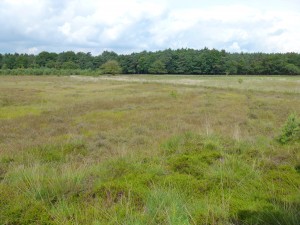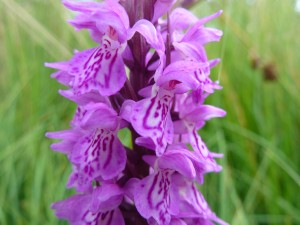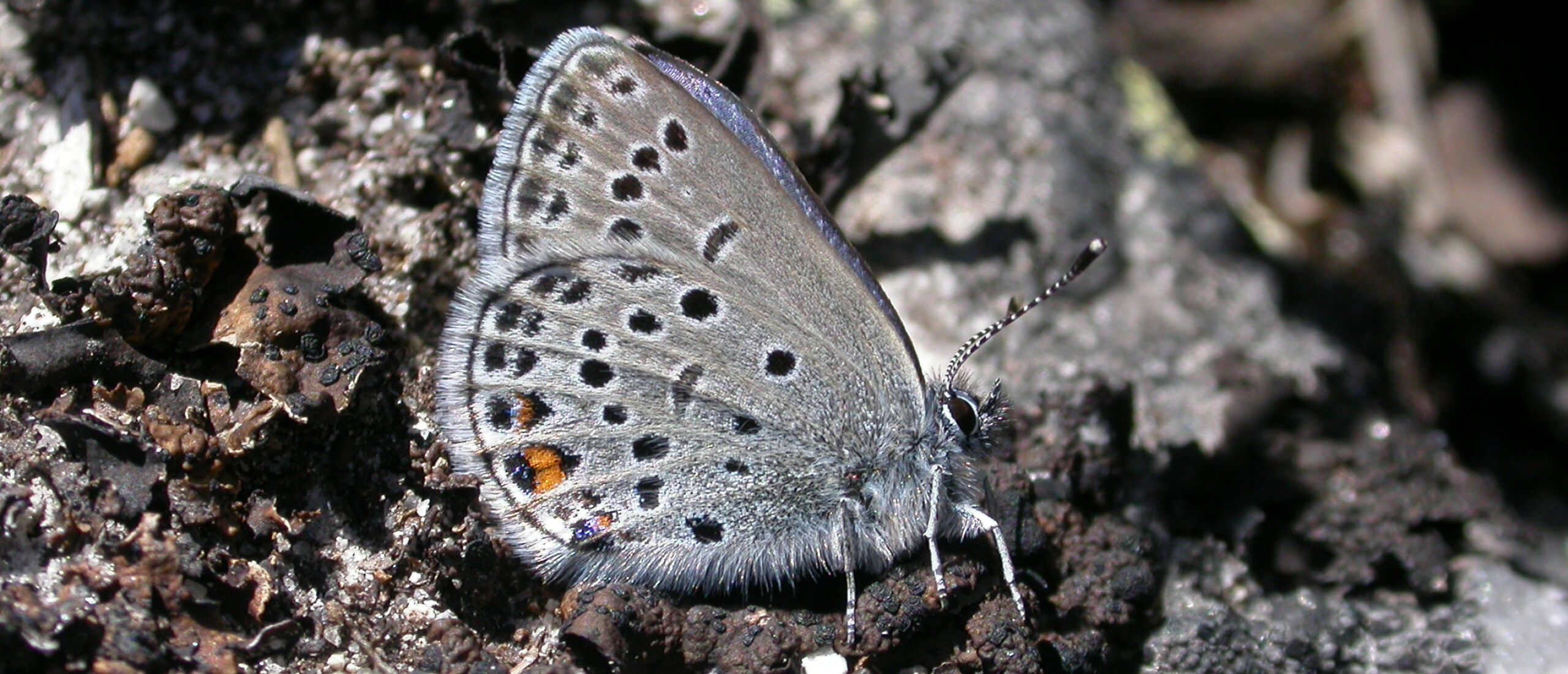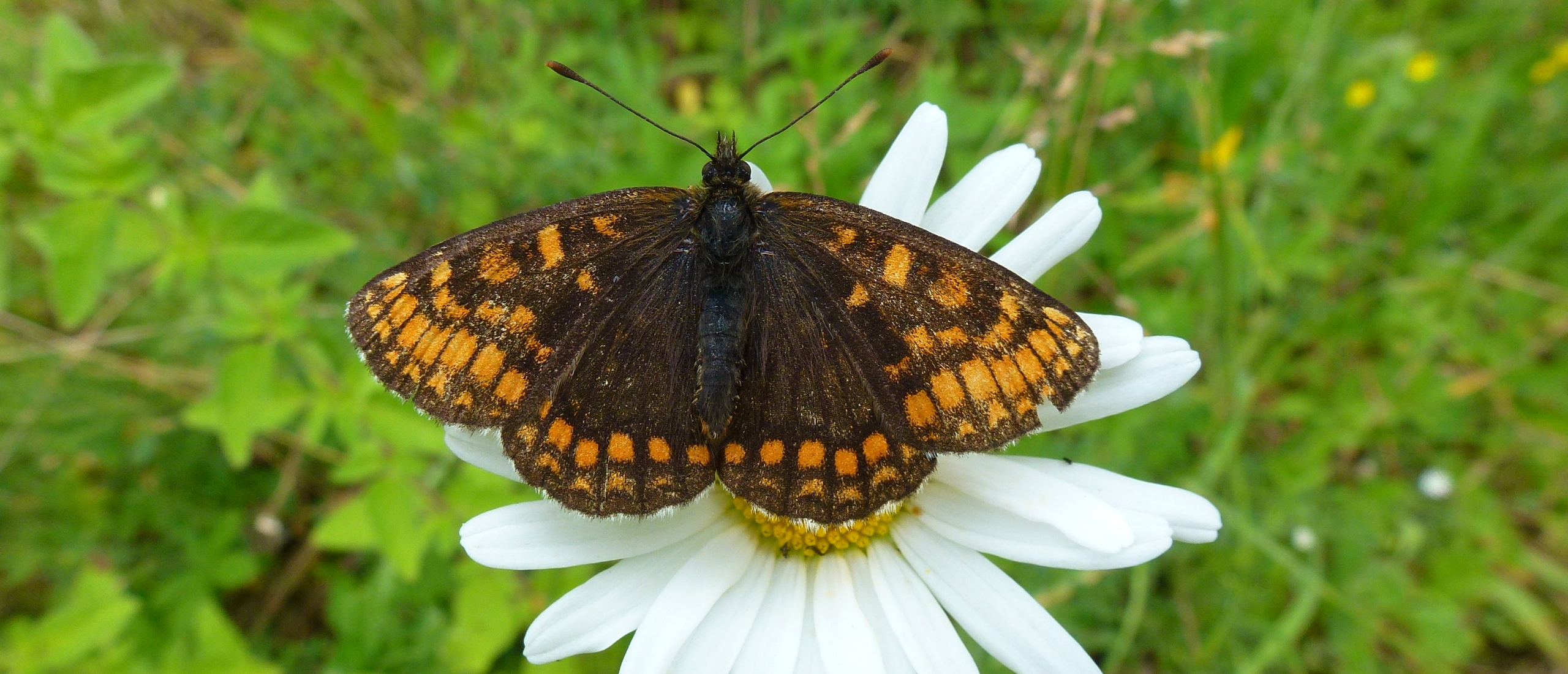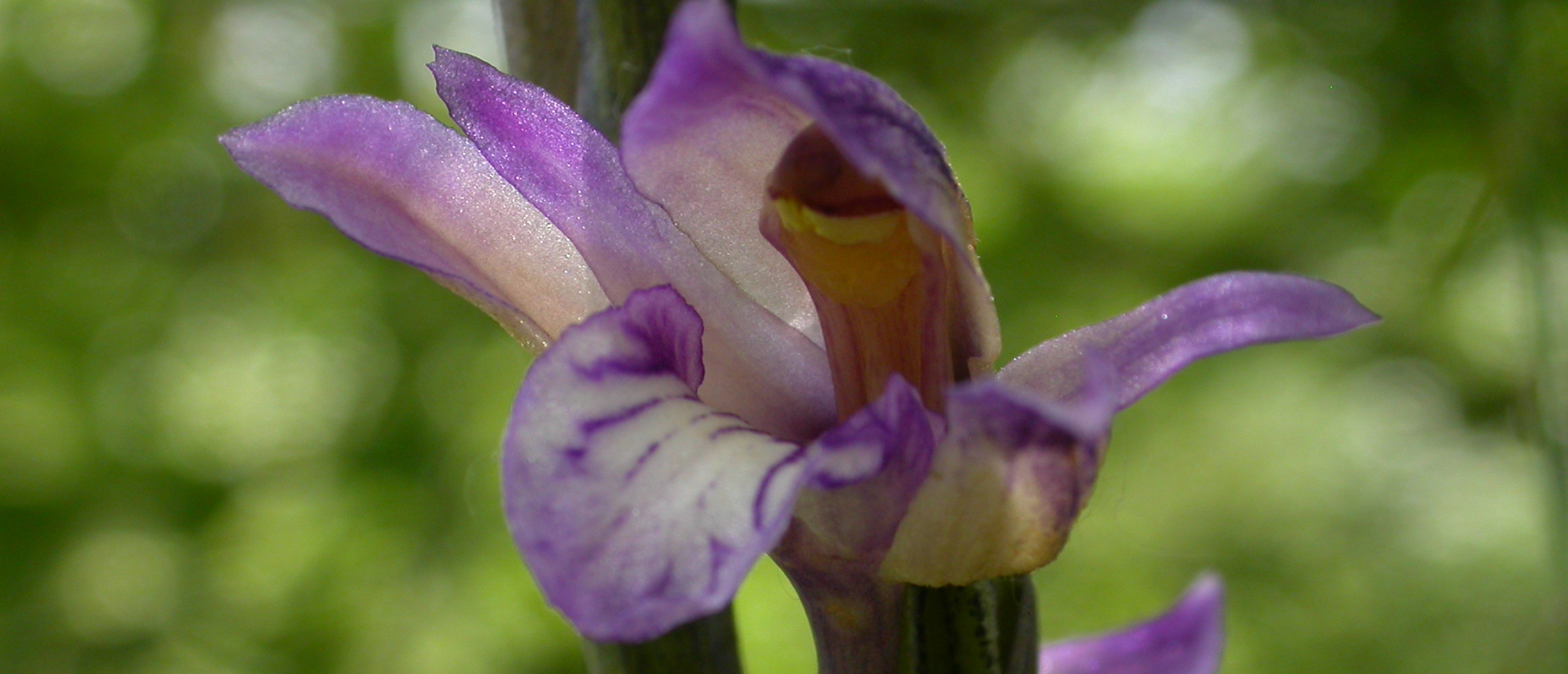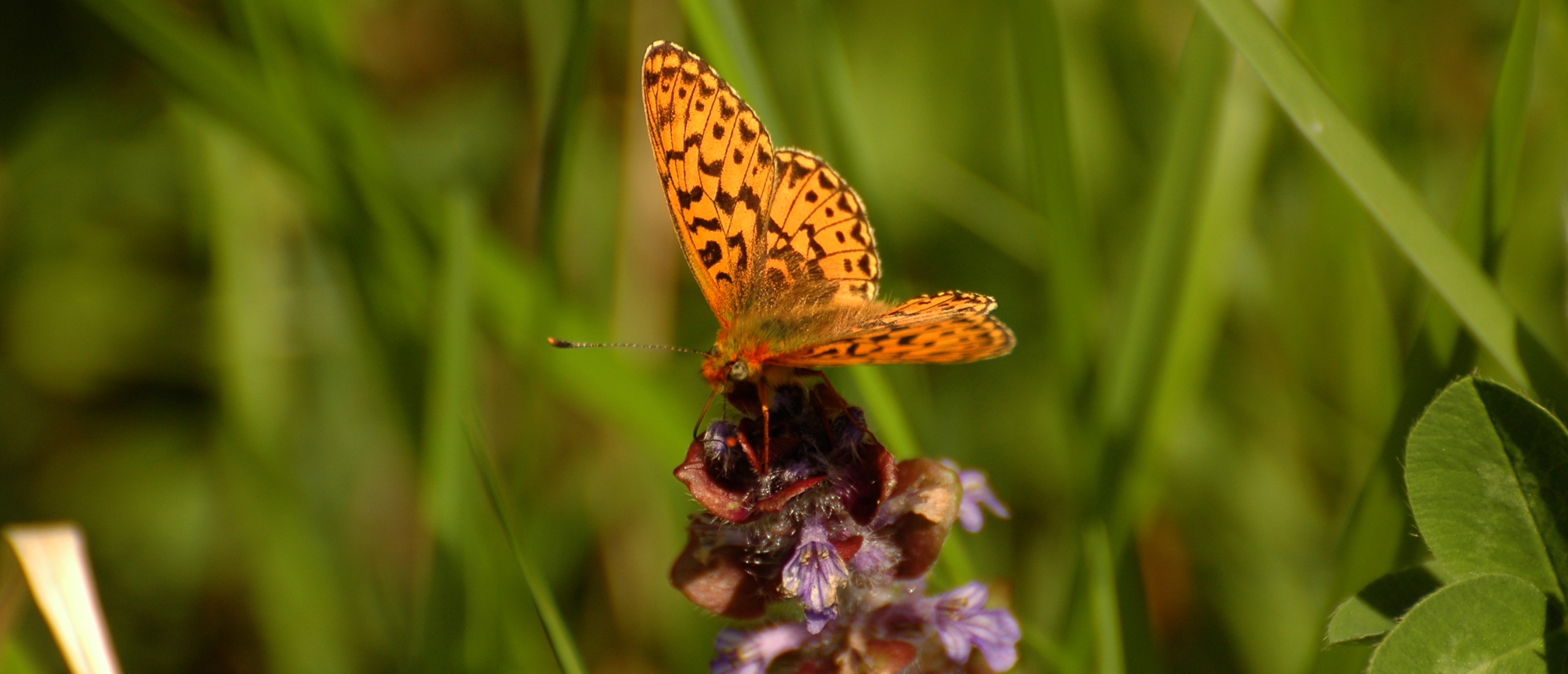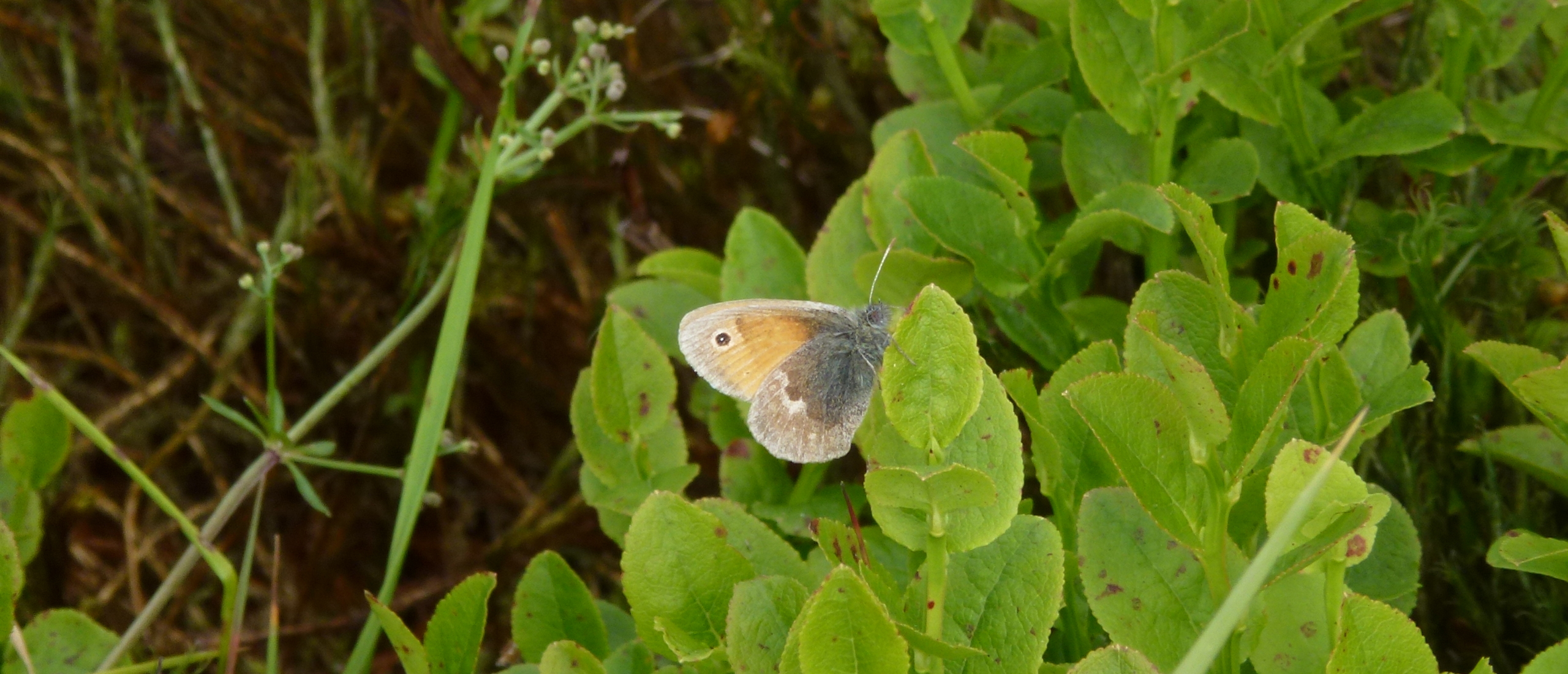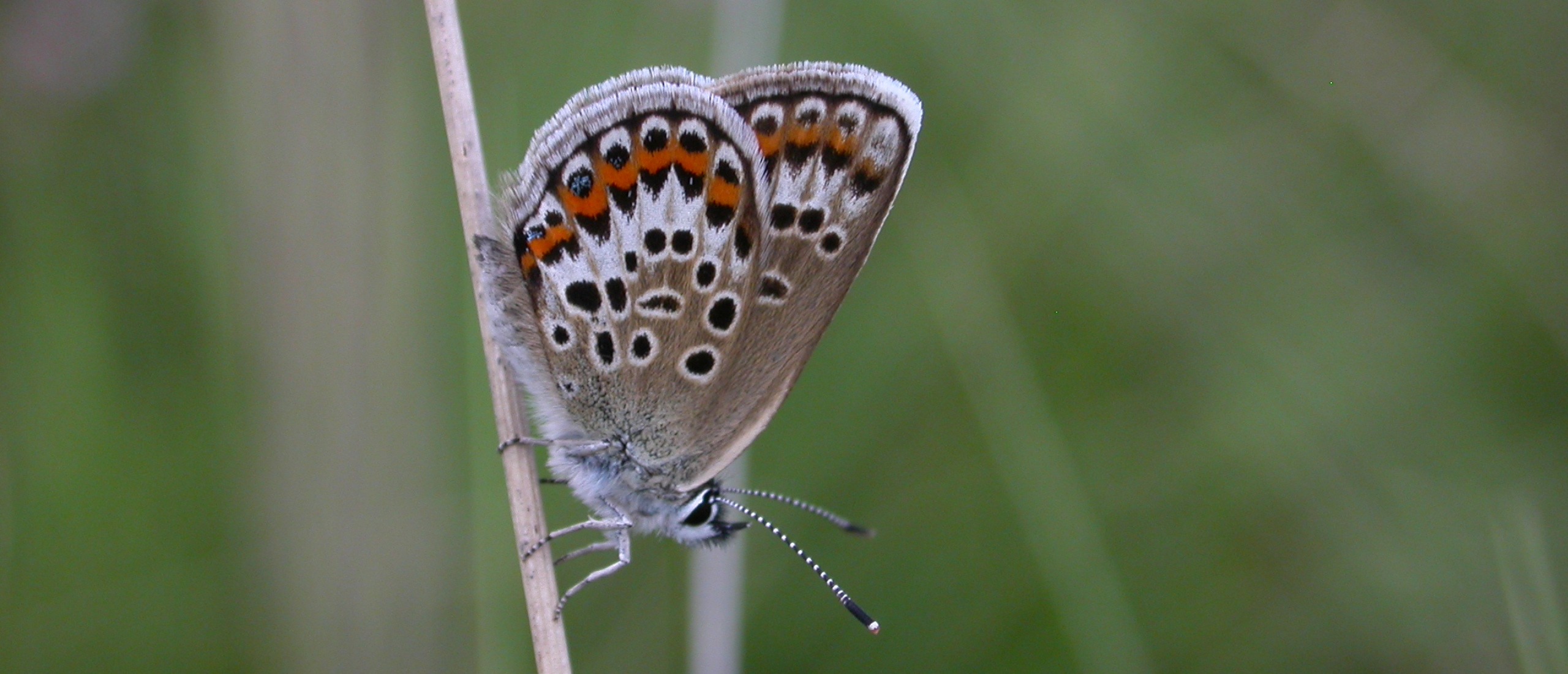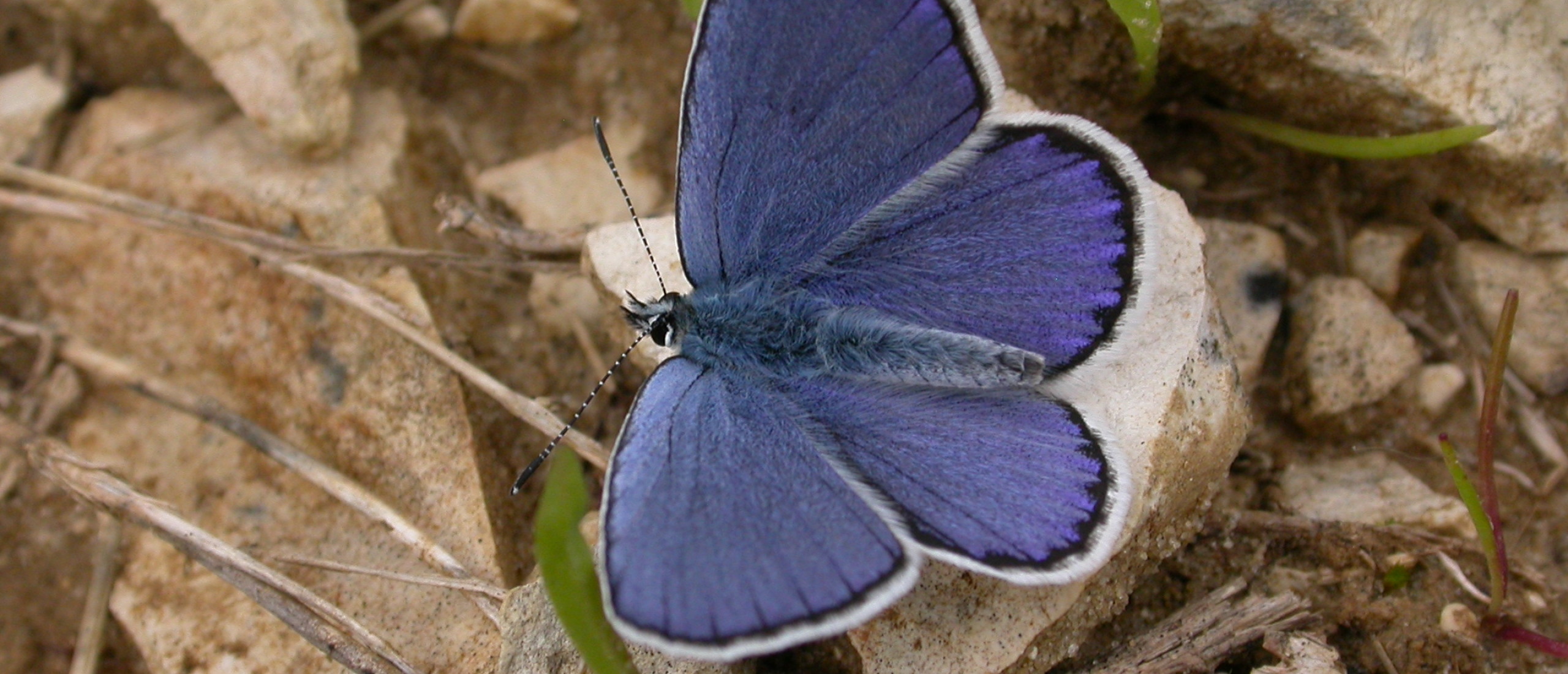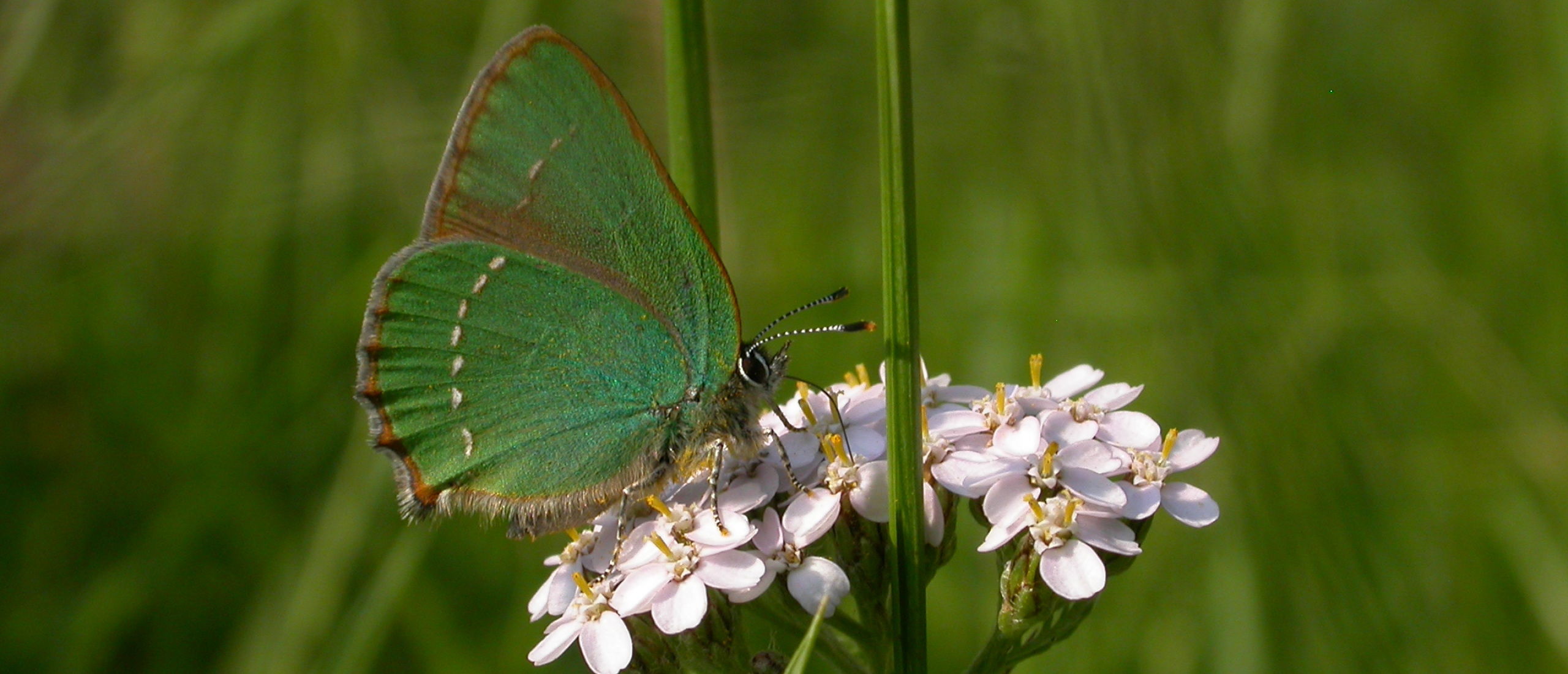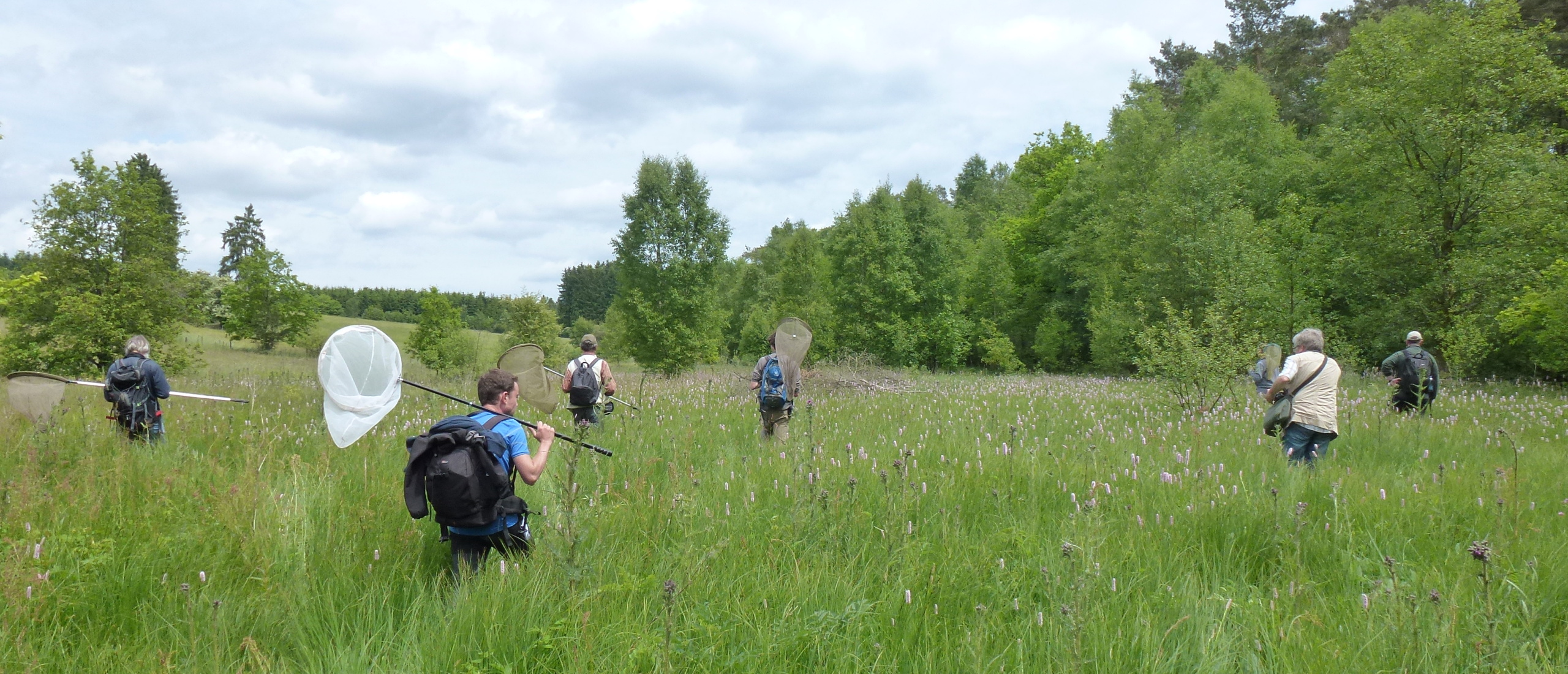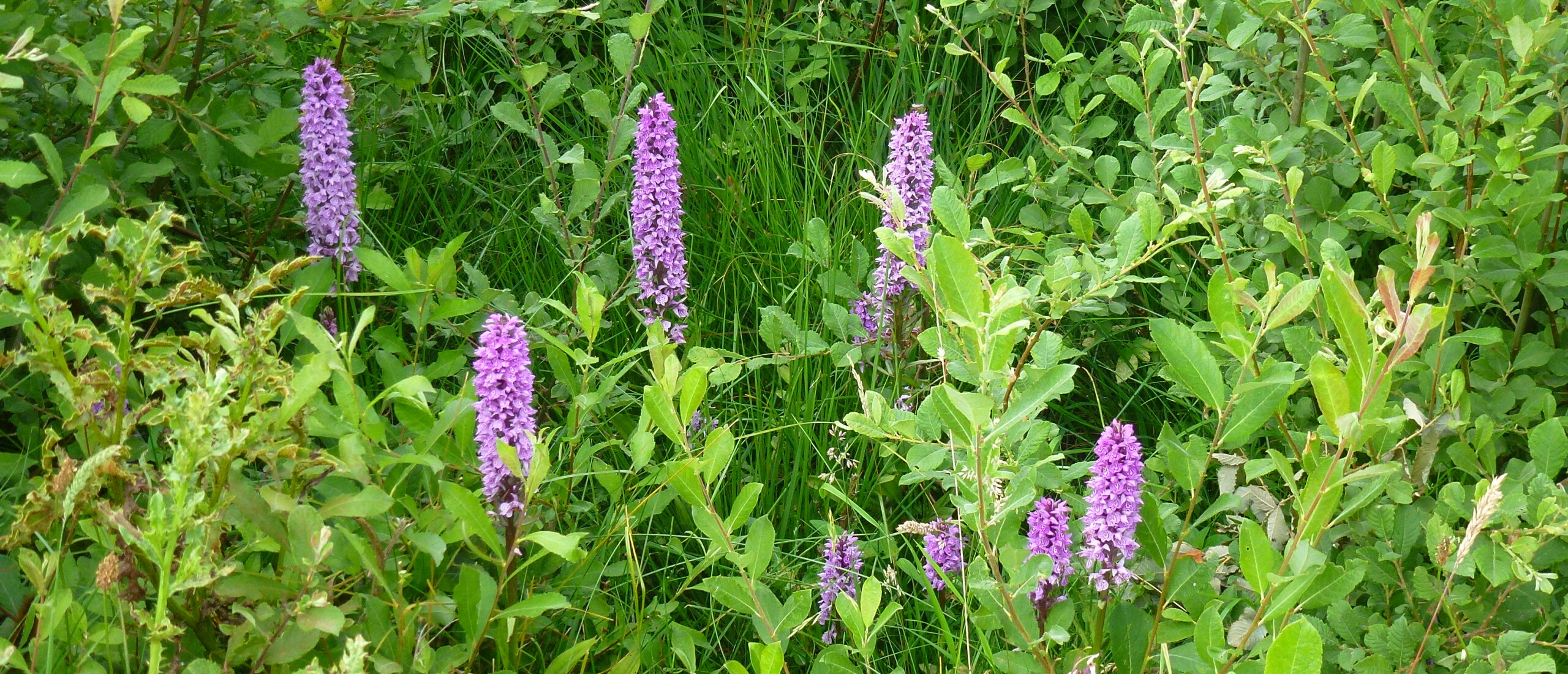
The Cranberries Following my ultimately successful search for the elusive Poplar Admiral, Limenitis populi, last weekend, I managed to squeeze in a brief visit to the coastal dunes that run along the Dutch coast. Here I was pleased to find several Niobe Fritillaries, Argynnis niobe. This species now appears to have disappeared from the inland Veluwe region of the Netherlands, but numbers in the dunes seem to be stable. They require areas of low, spreading bramble plants, among which they are relatively easy to find - but NOT to photograph, as they speed off immediately they are approached.
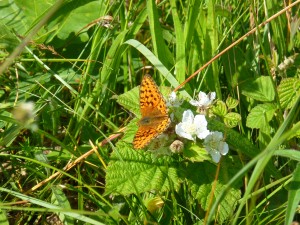 The only picture of the flighty Niobe Fritillaries I managed to obtain
The only picture of the flighty Niobe Fritillaries I managed to obtain
On Sunday, the (virtually) annual pilgrimage northwards into the provinces of Drenthe and Friesland took place, with the aim of finding three rare species that are exclusively found in boggy areas, and all of which have undergone a massive decline and contraction in range in recent years. All of them are now only just hanging on the Netherlands. They may indeed become extinct as the climate warms, as they are all three "Boreal" species that thrive in the cooler climates of Scandinavia and northern Russia. The first to be searched for was the rarest of the three, the Cranberry Fritillary, Boloria aquilonaris. This fast-flying species is restricted to just a few tiny, isolated bogs in the north-east of the country, and I only know one reliable site - and I knew my prospects would be even lower when I saw that a new No Entry sign had been placed next to the spot since my last visit to this minuscule bog, which harbours both the butterfly's larval foodplant, the Cranberry, Vaccinium oxycoccus, and its favourite nectar source, the Cross-leaved Heath, Erica tetralix. Luckily it was permitted to enter the adjacent forest track, and I managed to work my way around behind the bog, to a vantage point from which I could scan the area with binoculars. At first I was somewhat doubtful as to whether I would see anything at all, as the sun had disappeared some large clouds and only appeared briefly, and even then not remaining out for long enough to warm the place up. Finally, after a few false alarms caused by several Large Skippers, Ochlodes venatus, whose gingery colour resembles that of the fritillary, although the size is of course quite different, I managed to locate a single Cranberry Fritillary, which I was able to watch for several minutes as it buried its proboscis into the Cross-leaved Heath flowers. No photograph could be obtained, but luckily I had photographed it well at this site in previous years - including one famous occasion when a Cranberry Fritillary landed on "its" page in my open butterfly book!
 A Cranberry Fritillary I photographed here in 2005
A Cranberry Fritillary I photographed here in 2005
In previous years, when it was still possible to plunge about in that bog, I had seen up to five individuals, but at least this one was better than none, and provided confirmation that the species is at least just holding on. I am glad that entry has been banned, as the site is highly sensitive to trampling...and I know from bitter experience that some photographers will stop at nothing to obtain that definitive shot of a butterfly species, while not even giving a thought to the fact that their own actions are hastening its demise. The next species required only a short drive and a walk, but the weather was looking distinctly threatening by this time, and indeed it started to rain, and a thunder storm was raging not far away. Despite these adverse circumstances, it was not long before I managed to spot a single female Silver-studded Blue, Plebejus argus, which later dropped down into the heather when I approached to photograph it.
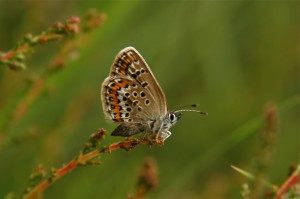 The heavily pregnant Silver-studded Blue
The heavily pregnant Silver-studded Blue
Once the rain had subsided, a few brief gleams of sunshine encouraged me to press on to a juniper-covered slope, from which it was possible to scan the extremely boggy ground below, which was again a favoured haunt of the diminutive and inconspicuous Cranberry plant, which creeps over the sphagnum moss, unnoticed by anyone but the most careful observer. It was not long before a small butterfly drew my attention, and a closer examination revealed it to be my second target species, the Cranberry Blue, Vacciniina (Plebejus) optilete.
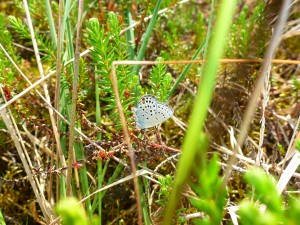 The Cranberry Blue was almost as hard to photograph as the Niobe Fritillary!
The Cranberry Blue was almost as hard to photograph as the Niobe Fritillary!
Like the fritillary, this butterfly is now reduced to a few tiny colonies, perhaps numbering not more than ten individuals, where it just manages to hold on. In total, I managed to spot either two or three, but not more. However, this may have been due to the unfavourable weather conditions rather than lack of butterflies. Much work is being carried out here, specifically for the butterflies and their associated bog-land specialist species, mainly involving raising the water table, removing encroaching birch and pine trees, and linking the individual bogs to allow the butterflies to move from one site to another. We can only wait to see whether such measures prove to be effective, or whether they came too late to save a butterfly that may anyway be doomed as a Dutch species.
The other wetland site I needed to visit required a drive of perhaps an hour to the north-west, to the impressive Fochteloërveen, an extensive protected area on the border between Drenthe and Friesland. As well now hosting a growing breeding population of Cranes, Grus grus, this wild, open expanse is home to the Netherlands' last viable population of the Large Heath, Coenonympha tullia, which despite its overall rarity, can be numerous in some years here.
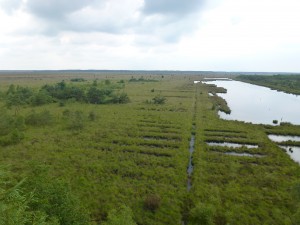 Former peat cuttings can clearly be seen on the Fochteloerveen
Former peat cuttings can clearly be seen on the Fochteloerveen
Although the clouds were closing in fast, there were still a few Ringlets, Aphantopus hyperanthus, and Large Skippers, Ochlodes venatus, as well as one unexpected addition to my 2014 list, a lone Gatekeeper, Pyronia tithonus. Luckily, just before the weather closed in altogether, I was able to spot one Large Heath dancing over the long, pale brown grass, thereby bringing my 2014 list up to 66 species. One final bonus, once the butterflies had disappeared with the sun, was a splendid showing of Broad-leaved Marsh Orchid, Dactylorhiza majalis subsp. majalis, which were growing in disturbed ground along the cycle track that crosses the fen.
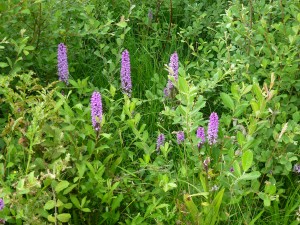 A fine group of Broad-leaved Marsh Orchids
A fine group of Broad-leaved Marsh Orchids
Butterfly list as of 30th June 2014: 66 species


